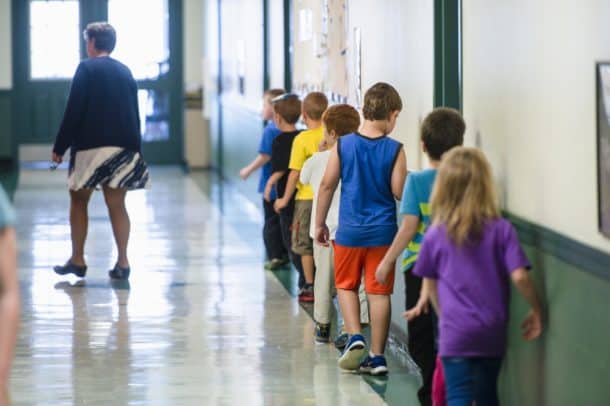By Lola Duffort/VTDigger
A group of lawmakers tasked with proposing an overhaul to Vermont’s K-12 education finance system began their work on Tuesday, electing Sen. Ruth Hardy, D-Addison, and Rep. Emilie Kornheiser, D-Brattleboro, to be its co-chairs.
The charge of the Task Force on the Imple- mentation of the Pupil Weighting Factors Report, as the eight-member special panel is called, is fundamentally about how Vermont taxes property owners to pay for schools.
In Vermont, school district budgets are crafted and approved locally, when voters say Yea or Nay to spending plans at the ballot box. Those budgets are then funded, in full, by the state’s education fund, which is par- tially funded through property taxes.
Local property tax rates are then based on how much a district spends “per equal- ized pupil.”
The state uses a weighted formula to calculate each district’s per-pupil expenditure, which is supposed to account for the fact that certain children need additional resources and are more expensive to serve.
But researchers argued in a 2019 report commissioned by lawmakers that the formula’s current “weights” were never empirically derived — and are particularly out of sync when it comes to the cost of educating poor students and those learning English or living in rural areas.
Vermont spends handsomely on its schools, but the distribution of resources is not exactly equal. When regional cost differences are accounted for, the Green Mountain State spends more, on average, per pupil than any other state in the country, according to a recent Education Week analysis cited by the Legislature’s analysts. But the state also has the second-largest gap in the U.S. between its highest- and lowest-spending school districts: $12,865 per pupil.
“For years, I was really baffled by the discrepancies that I saw in funding between the [district] I lived in and the one I worked in,” Martine Gulick, a school board member in Burlington, told the panel Tuesday. “And I came to realize that my library budget, where I worked, was 10 times larger than the library budget of Burlington High School.”
The question before the task force is how to make sure more money is spent where it is most needed. Many local school officials, particularly in so-called “underweighted” districts, say the answer is straightforward: simply adjust the weights to give districts serving marginalized students additional taxing capacity, and let local school boards and voters decide how to best serve their students.
But some aren’t so sure.
The Public Assets Institute, a left-leaning Montpelier think tank, has long advocated for a more equitable school funding. But it argues just adjusting the weights won’t guarantee school districts that serve the neediest students will actually spend more, and will only make an already byzantine system harder for local voters and property taxpayers to decipher.
“The funding system also already has a problem of being way too complex for a lot of voters, and I just think this is going to add a whole other layer of complexity,” said Jack Hoffman, a senior analyst at Public Assets.
Instead, Hoffman said, lawmakers may want to take a closer look at categorical aid. In much the same way that the state currently gives schools extra funding to schools for things like special education and transportation, it could send grants to schools with high populations of low-income students.
But leaning on categorical aid to correct inequities instead of adjusting the weights is a “non-starter” for the Coalition for Vermont Student Equity, a group of over 20 school districts advocating for reform, according to Maggie Lenz, a lobbyist for the coalition.
“It allows certain districts to have flexibility, and then it polices how other districts are providing these services and spending this extra taxing capacity,” said Lenz. “It’s extremely patronizing.”
Tuesday’s meeting took place, as has all legislating since March of 2020, over Zoom. But the group will begin meeting in person in mid-July, when lawmakers transition back to face-to-face work at the Statehouse in Montpelier.
The task force will meet through the sum- mer and fall, with its final report due Dec. 15. Its tentative work plan envisions public hearings taking place in Sept. and Oct.




